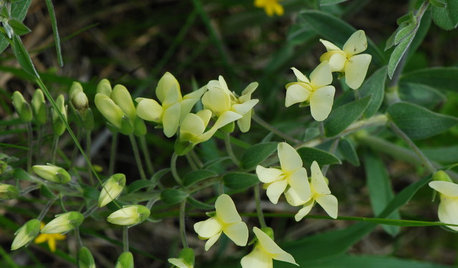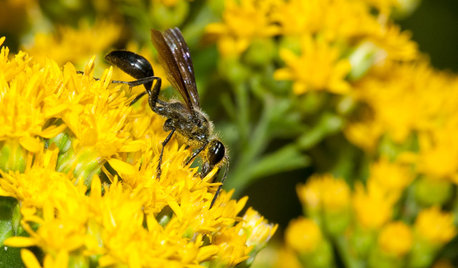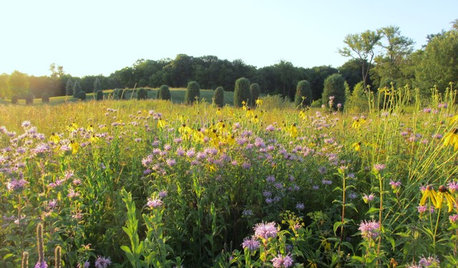Cross pollination of Beans
Macmex
12 years ago
Related Stories

NATIVE PLANTSPlant These Fall-Flowering Natives in Early Summer for Pollinator Love
These 3 groups of plants will support masses of beneficial insects come autumn
Full Story
FLOWERS AND PLANTSPlant Baptisia Bracteata for Blooms Pollinators Will Love
Longbract wild indigo is great in dry soil, and its spring flowers attract butterflies and bumblebees
Full Story
GARDENING GUIDESMeet the Grass-Carrying Wasp, a Gentle Pollinator of Summer Flowers
These fascinating insects nest in wood cavities and hollow plant stems
Full Story
GARDENING GUIDES10 Easy Edibles for First-Time Gardeners
Focus on these beginner-friendly vegetables, herbs, beans and salad greens to start a home farm with little fuss
Full Story
EDIBLE GARDENSGarden BFFs? Why Your Vegetables Are Begging for Companion Plants
Foster friendships among plants for protection from pests, pollination support and color camaraderie
Full Story
GARDENING GUIDESAttract Hummingbirds and Bees With These Beautiful Summer Flowers
Roll out a welcome mat for pollinators to keep your landscape in balance and thriving
Full Story
GARDENING AND LANDSCAPINGBid Bad Garden Bugs Goodbye and Usher In the Good
Give ants their marching orders and send mosquitoes moseying, while creating a garden that draws pollinators and helpful eaters
Full Story
FARM YOUR YARDHello, Honey: Beekeeping Anywhere for Fun, Food and Good Deeds
We need pollinators, and they increasingly need us too. Here, why and how to be a bee friend
Full Story
GARDENING GUIDESWhat Prairies Teach Us About Garden Design
Wild spaces offer lessons for home gardeners about plants, pollinators and the passage of time
Full Story
GARDENING GUIDESGreat Design Plant: Asclepias Incarnata for a Butterfly Garden
Beautiful swamp milkweed makes it easy to help monarchs and other pollinators in eastern U.S. gardens
Full StorySponsored
More Discussions






duckcreekgardens
Okiedawn OK Zone 7
Related Professionals
Bedford Heights Landscape Contractors · Brownsville Landscape Contractors · Fair Oaks Landscape Contractors · North Lauderdale Landscape Contractors · Painesville Landscape Contractors · Pleasanton Landscape Contractors · Soddy Daisy Landscape Contractors · Twin Falls Landscape Contractors · White Bear Lake Landscape Contractors · Fort Myers Decks, Patios & Outdoor Enclosures · Haddonfield Decks, Patios & Outdoor Enclosures · New Albany Decks, Patios & Outdoor Enclosures · Richmond Decks, Patios & Outdoor Enclosures · Shirley Decks, Patios & Outdoor Enclosures · Tooele Decks, Patios & Outdoor Enclosureselkwc
Okiedawn OK Zone 7
owiebrain
MacmexOriginal Author
owiebrain
elkwc
duckcreekgardens
elkwc
duckcreekgardens
duckcreekgardens
MacmexOriginal Author
Okiedawn OK Zone 7
duckcreekgardens
judyok
Okiedawn OK Zone 7
judyok
elkwc
MacmexOriginal Author
Okiedawn OK Zone 7
duckcreekgardens